- Home
- Poul Anderson
A World Named Cleopatra
A World Named Cleopatra Read online
Table of Contents
Title Page
Blurb
Acknowledgements
Copyright
Epigraph
Dedication
Introduction
THE SERPENT IN EDEN
2300 A.D.
FABER-MASTER
2553 A.D.
AMONG THE MOUNTAINS
3298 A.D.
WAYSIDE WORLD
ABOUT THE AUTHORS
A World Named Cleopatra
Poul Anderson, Jack Dann, Michael Orgill, George Zebrowski
Produced by Roger Elwood
1977
Four days in the life of
A WORLD NAMED CLEOPATRA,
The Serpent in Eden, by Poul Anderson
The first earthpeople to explore Cleopatra make fateful contact with the eerily humanlike race of reptilians who inhabit the planet.
Faber-Master, by Michael Orgill
In a time of political upheaval, a celebrated artist and his son struggle over what it means to create, to kill, to be human.
Among the Mountains, by Jack Dann
A small, gentle nation becomes the seedbed of violence that threatens to engulf the entire planet.
Wayside World, by George Zebrowski
One of the last survivors of the Cleopatra colony dares to dream again of an interstellar human community.
Never before has an extraterrestrial world seemed as real as the planet Cleopatra, in this extraordinary work of fiction. When you finish the book, you will feel as though you have been there yourself—felt the intense “sunshine” on your skin, gazed at the fantastically sculpted mountains, suffered and rejoiced with the people of this exotic yet strangely familiar planet.
Acknowledgements
A WORLD NAMED CLEOPATRA by Poul Anderson, reprinted from The Many Worlds of Poul Anderson 1974.
THE SERPENT IN EDEN by Poul Anderson, reprinted from Omega 1973.
FABER-MASTER by Michael Orgill, 1977.
AMONG THE MOUNTAINS by Jack Dann, 1977.
WAYSIDE WORLD by George Zebrowski, 1977.
“A sad spectacle (the stars). If they be inhabited, what a scope for misery and folly.”
—Thomas Carlyle
For Norbert Slepyan, from all the cast-aways on Cleopatra.
Introduction
A World Named Cleopatra
by Poul Anderson
The planetary system lies in Ursa Major, 398 light-years from Sol. This causes certain changes in the appearance of the heavens. Northerly constellations are “spread out” and most of the familiar stars in them show brighter than at Earth, though some have left the configurations because, seen from here, they now lie in a southerly direction. Fainter stars in them, invisible at Earth, have become naked-eye objects.
These changes are the greater the nearer one looks toward Ursa Major. It is itself modified quite out of recognition by the untrained eye, as are the constellations closest to it. The further away one looks, around the celestial sphere, the less distortion. Southern, constellations are comparatively little affected.
Those near the south celestial pole of Earth, such as Octans, keep their shapes the best, though they exhibit the most shrinkage in angular size. Various of their fainter stars (as seen from Earth) are now invisible—Sol is too—but they have been replaced by others which (as seen from Earth) “originally” were northern, low, and many are only to be observed at given seasons.
Under these circumstances, it may be most convenient for colonists to redraw the star map entirely, making new constellations out of what they see. Or perhaps this will happen of itself in the course of generations.
THE SUN
The sun was named Caesar, mythology having, been used up closer to home. It is of type F7, which means it is hotter and whiter than Sol. Its mass is 1.2, its total luminosity 2.05 Sol. The diameter is little greater, but spots, prominences, corona, and output of charged particles (solar wind) are fewer. It is a younger star than ours, though by less than a billion years. Either because of this, or because of variations in galactic distribution, the proportion of heavy elements in it and its planets is somewhat more than for the Solar System.
In general, the Caesarian System is a normal one. Besides asteroids, it contains eleven planets. In outward order, these have been christened Agrippa (small, hot, nearly airless); Antony (about Earth size, with an atmosphere, but not habitable by man); Cleopatra (the sole terrestroid member); Enobarbus (smaller than Earth, larger than Mars, ruddy like the latter); Pompey (a gas giant, somewhat more massive than Jupiter); four lesser giants (Lepidus, Cornelia, Calpurnia and Julia); and finally, remote Marius and Sulla (the latter really just a huge comet which has never moved into the inner system). There are two distinct asteroid belts separating Enobarbus, Pompey and Lepidus.
Seen from Cleopatra, Agrippa and Antony are morning or evening stars, though the former is usually lost in sun glare. The latter is brilliant, its iridescence often apparent to the naked eye as solar wind causes its upper atmosphere to fluoresce. Enobarbus glows red, Pompey and Lepidus tawny white.
Pale-green Cornelia can occasionally be seen without instruments.
THE PLANET
Cleopatra moves around Caesar in an orbit of slight eccentricity, at an average distance of 1.24 astronomical units. Its year is 1.26 times that of Earth, about 15 months long, and the sun in its sky has only 0.87 the angular diameter of ours. Nevertheless, because of its brightness, Caesar gives Cleopatra 1.33 times the total irradiation that Earth gets. A larger proportion of this energy is in the shorter wavelengths; Caesar appears a bit more bluish white than yellowish white to human vision. The lesser apparent size is not particularly noticeable, since no prudent person looks anywhere near it without eye protection, let alone straight at it. Shadows on the ground tend to be sharper than on Earth and to have more of a blue tinge. All color values are subtly different, though one quickly gets used to this.
Theoretically, the mean temperature at a given latitude on Cleopatra should be some 20°C higher than the corresponding value for Earth. In practice, the different spectral distribution and the atmosphere and hydrosphere, modify things considerably. Cleopatra is warmer, and lacks polar icecaps. But then, this was true of Earth throughout most of its existence. Even at the equator, some regions are balmy rather than hot, while the latitudes comfortable to man reach further north and south than on present-day Earth.
People simply avoid the furnace-like deserts found here and there.
They also take precautions against the higher level of ultraviolet light, especially in the tropics. Again,, this poses no severe problem. One can safely sunbathe in the temperate zones, and do so well into the polar regions in summer. Usually there is no undue glare of light; the more extensive atmosphere (vide infra) helps in scattering and softening illumination. Winter nights are usually ornamented by fantastically bright and beautiful auroras, down to lower latitudes than is the case on Earth—in spite of Cleopatra’s strong magnetic field. To be sure, solar-atmospheric interference with radio and the like can get pretty bad, especially at a peak of the sunspot cycle (for Caesar, about 14 Earth-years long, as opposed to Sol’s 11). But once installed, laser transceivers aren’t bothered. ‘
Cleopatra is smaller than Earth. In terms of the latter planet, its mass is 0.528, its radius 0.78 (or 4960 km at the equator), its mean density 1.10 (or 6.1 times that of water), and its surface gravity 0.86. This last means that, for example, a human who weighed 80 kg on Earth weighs 68.5 here; he himself soon adjusts to that—though he is well advised to maintain a lifetime program of physical exercise to avoid various atrophies and circulation problems—but engineering is affected. (For instance, aircraft need less wing area but grou
nd vehicles need more effective brakes.) An object falling through a given distance takes 1.07 times as long to do so as on Earth and gains—0.93 the velocity; a pendulum of given length has 1.14 the period; the speed of a wave on deep water is 0.93 what it is on Earth.
Standing on a flat plain or sea, a man of normal height observes the horizon as being about 7 km off, compared to about 8 on Earth—not a terribly striking difference, especially in rugged topography or hazy weather.
Despite its lesser dimensions, Cleopatra has quite a terrestroid atmosphere. In fact, the sea level pressures on the two planets are almost identical. It is thought that this is due to the hot, dense mass of the planet outgassing more than Earth did, early in their respective histories, and to the fact that, ever since, the strong magnetic field has helped keep too many molecules from getting kicked away into space by solar and cosmic ray particles.
Air pressure drops with altitude more slowly than on Earth, because of the lower gravity. On Earth, at about 5.5 km the pressure is one-half that at sea level; but on Cleopatra, one must go up 6.35 km to find this. Not only does that moderate surface conditions, it extends life zones higher, and offers more possibilities to flyers both living and mechanical.
There having been less tidal friction acting on it through most of its existence, Cleopatra spins faster than Earth: once in 17 hr 21 m 14.8 s, or about 17.3 hr or 0.72 Earth diurnal period. Its year therefore lasts 639 of its own days, give or take a little bit because of trepidation, precession, etc.
The axial tilt is 28°, somewhat more than Earth’s. However, the climate of high latitudes is not necessarily more extreme on that account Certainly winters are less cold. It is the difference in the length of seasons—a fourth again as much—which is most important. Likewise, the seasonal variation of day and night lengths is more marked than on Earth, and the Arctic and Antarctic come nearer to the equator.
The stronger sun, which supplies more energy; the longer year, which gives more time to overcome thermal lag; the smaller size, which brings zones closer together; the larger axial tilt, which exaggerates the differences between them; the quicker spin, which generates more potent cyclonic forces; the lower pressures but the longer distance up to a stratosphere, which make for more extensive air masses moving at a given time under given conditions— all these create “livelier” weather than on Earth. Storms are more common and violent, though they tend to be short-lived. Huge thunderstorms in the river valley, twisters on the plains, hurricanes in the tropics, and blizzards near the poles are things which colonists must expect; they have to build stoutly and maintain an alert meteorological service.
But this seeming drawback has its good side. With such variability, both droughts and deluges are rare; chilly fogs don’t linger; inversion layers break up before they accumulate unpleasant gases; daytime cloud patterns can be gorgeous to watch, while nights are brilliantly clear more often than not, in most areas of the planet.
Turning back to the globe itself: Its greater mean density than Earth’s is due to a higher percentage of heavy elements, especially those later in the periodic table than iron. This leads to a particularly hot core which, combined with the rapid rotation, is the source of the magnetic field—screening the atmosphere from solar wind. (Of course, the field is far weaker than in any generator—roughly twice as strong as Earth’s—but it reaches way out.) Having not only more interior heat but a smaller volume, Cleopatra radiates more strongly.
This means that it is geologically, or planetologically, more active. There are more hot springs, geysers, volcanoes, quakes, and tsunamis, especially along the leading edges of continents and in midocean (vide infra). There is faster mountain-building, aided by the lower gravity which permits higher upheavals and steeper slopes. (The same is true of sand dunes.) Erosion proceeds more rapidly too; hence spectacularly sculptured uplands are quite common.
With the crustal plates more mobile than on Earth, we get an overall situation—there are many local exceptions, of course—about as follows. No continent is as big as Eurasia; the largest is comparable to North America. Their shelves drop sharply off to more profound depths than. Terrestrial. They define—in the same rough way as on Earth—four major oceans, each surrounded by its “ring of fire”—and marked down the middle by archipelagos of which numerous islands are volcanic. Elsewhere are smaller, shallower seas. Along with the tide patterns (vide infra), these factors tend to inhibit the generation of great ocean currents, and thus to somewhat isolate the latitudes from each other. That isn’t all bad if “Norway” has no “Gulf Stream” to warm it, neither does the “Pacific Northwest” have a “Kuroshio” to chill it, and marine life is even more varied than on Earth.
The proportion of land to water surface is slightly higher than Terrestrial, mainly because of the powerful upthrust of crustal masses—though doubtless the splitting of H2O molecules by ultraviolet quanta, before there was a protective ozone layer, also has a good deal to do with this. However, there is no water shortage; in fact, the smaller size of individual land blocks and the vigorous air circulation make for better distribution of this substance and keep continental interiors reasonably temperate.
The abundance of heavy metals is a boon to industry, yet not altogether a blessing. Some of these elements and their compounds are poisonous to man. Concentrated in certain areas, they make the soil, or organisms living there, dangerous. But again, this is by no means the universal case, and precautions are not hard to take once people have been warned. Several beautiful minerals and gemstones appear to be unique to this planet.
SATELLITES
Cleopatra has no moon in the usual sense. Perhaps it once did, or perhaps an asteroid was captured. In any event, at some point in the fairly recent past (estimated 10 million years ago), this body (estimated mass, 0.001 that of Luna) came within the Roche limit and was pulled asunder by tidal forces.
Numerous fragments fell. The biggest left traces in the form of huge circular lakes, bays and valleys.
Mete-orites are still coming down as perturbation maneuvers them out of orbit. So there are many pitted rocks, many craters great and small, on Cleopatra, the newest sharply defined, the oldest blurred by erosion. On any clear night, shooting stars may be seen delightfully often.
But most of the disrupted mass formed a ring, at a mean distance of some 7500 km from the surface, which is still around and will probably last for millions of years to come. It is not like the ring(s) of Saturn, the latter consisting of tiny ice particles. Cleopatra is surrounded by a belt of stony and metallic fragments, ranging in size down to gravel and fine dust. There is considerable space between the average pair of rocks, though of course this varies.
Except for Charmian and Iras (vide infra), the satellites are too small to be seen by day against sun glare.
Moreover, being nearly in the equatorial plane, the ring shows best in the tropics. In high latitudes one sees it low in the sky, often obscured by mountains, woods, or haze; and one cannot see it at all in the polar regions (above latitude 66°) aside from a few isolated, far-out particles.
The ring is at its most spectacular at equatorial mid-night around the time of solstice. Then a band of hundreds of glittering, twinkling fireflies streams across the sky from west to east, the faster (nearer) overtaking the slower (further out) though all move swiftly. Irregular in shape, scoured and scored by dust, many sparkle in prismatic hues as well as white. The dust itself forms a dimly glowing background, through which stars can be seen. Though the band has no constant or definite boundaries, it averages about 10° wide, brightest at the middle, fading out toward the edges.
The mean synodic period of a particle, i.e., the time for a complete cycle from rising to rising as observed on the ground, is 7.5 hr or about 0.43 Cleopatran day. This is 48° per hr, or rather more than three times as fast as Sol or Luna crosses the Terrestrial sky. However, the ring is too close in for the entire half arc to be visible anywhere on the planet, so the maximum time observed (at the equator) is
1 hr 22 m.
That time is really only interesting as concerns the two members of the ring which are so big that they may be called tiny moons. They have, indeed, been given mimes, Charmian and Iras. (At the nomenclature conference, one faction wanted a Ftaatateeta but was voted, down). Charmian is the larger and slightly closer. In fact, it seems just about the same size as Luna does on Earth, though its actual mean diameter is not quite 70 km. has has about half the linear cross section and moves a little slower. (The respective synodic periods are 7.6 and 8.2 hr, which means that Charmian overtakes has every 102 hr or 5.9 Cleopatran days. These figures are subject to some oscillation because of as-sorted gravitational influences.) The two orbits are so skewed that, while they come near, the moonlets seldom overlap.
In other words, they move along the ring approximately four times in a Cleopatran day and night, go-ing through approximately 5.6 phase-change cycles as they do; but most of this cannot be seen from any single place on the ground.
Neither looks much like Luna. Charmian is only roughly spheroidal, Iras still less so. They show angles, facets, promontories and markings as they orbit the planet while spinning in a wobbly fashion. They both resemble Luna in being large and reflective enough to remain visible during an eclipse.
This eclipse is due to the fact that Cleopatra’s shadow crosses the rings. There is sufficient axial tilt that at a solstice, only a small “bite” is taken out of the lower edge of the band at its lowest point—and the band is irregular, fluctuating, and vaguely defined enough for this not to be particularly noticeable. But as the planet moves on around its sun, the geometry changes. About 23 Cleopatran days after solstice, the shadow arc entirely bisects the ring. By equinox, ca. 160 days after solstice (ca. 115 Earth days), the eclipse is at a maximum.

 Security
Security The Valor of Cappen Varra
The Valor of Cappen Varra The Sensitive Man
The Sensitive Man Virgin Planet
Virgin Planet To Build a World
To Build a World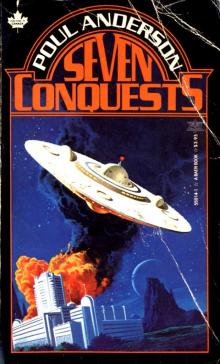 Seven Conquests
Seven Conquests Mayday Orbit
Mayday Orbit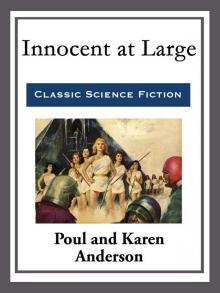 Innocent at Large
Innocent at Large Winners!
Winners! Mother of Kings
Mother of Kings Un-Man
Un-Man War of the Gods
War of the Gods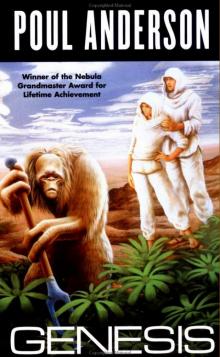 Genesis
Genesis Industrial Revolution
Industrial Revolution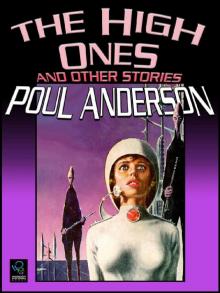 The High Ones and Other Stories
The High Ones and Other Stories The Chapter Ends
The Chapter Ends Flandry of Terra
Flandry of Terra Starfarers
Starfarers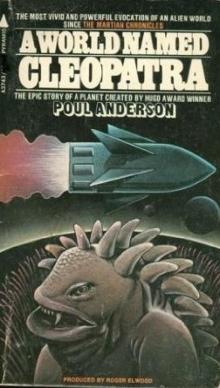 A World Named Cleopatra
A World Named Cleopatra Operation Chaos
Operation Chaos![Harvest of Stars - [Harvest of Stars 01] Read online](http://i1.bookreadfree.com/i/03/17/harvest_of_stars_-_harvest_of_stars_01_preview.jpg) Harvest of Stars - [Harvest of Stars 01]
Harvest of Stars - [Harvest of Stars 01] The Rebel Worlds
The Rebel Worlds Poul Anderson's Planet Stories
Poul Anderson's Planet Stories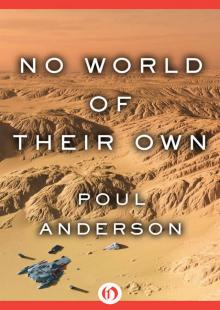 No World of Their Own
No World of Their Own The Merman's Children
The Merman's Children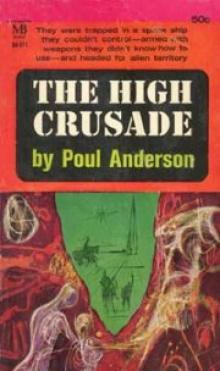 The High Crusade
The High Crusade The Stars Are Also Fire
The Stars Are Also Fire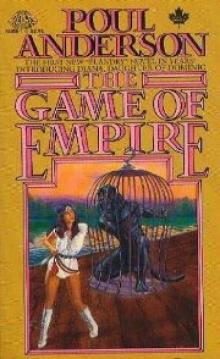 The Game of Empire df-9
The Game of Empire df-9 The Sorrow of Odin the Goth tp-7
The Sorrow of Odin the Goth tp-7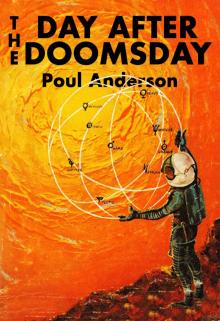 The Day After Doomsday
The Day After Doomsday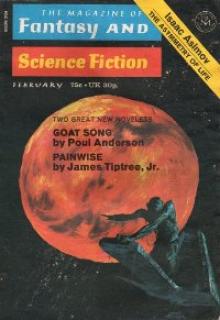 Goat Song
Goat Song The Wing Alak Stories
The Wing Alak Stories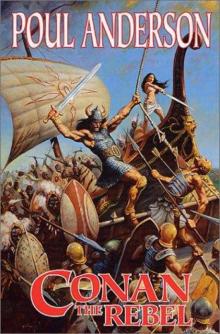 Conan the Rebel
Conan the Rebel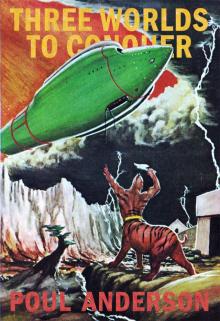 Three Worlds to Conquer
Three Worlds to Conquer Iron mw-1
Iron mw-1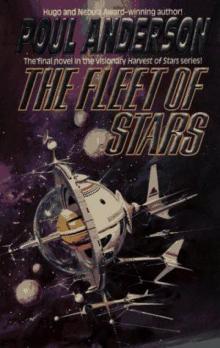 The Fleet of Stars
The Fleet of Stars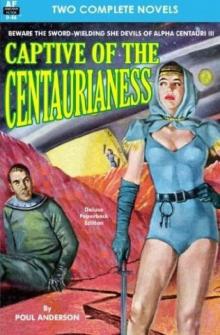 Captive of the Centaurianess
Captive of the Centaurianess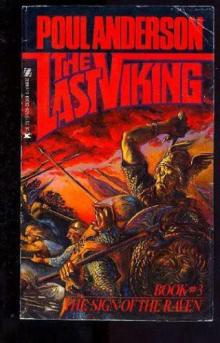 The Sign of the Raven
The Sign of the Raven The Boat of a Million Years
The Boat of a Million Years New America
New America Satan's World
Satan's World Gallicenae
Gallicenae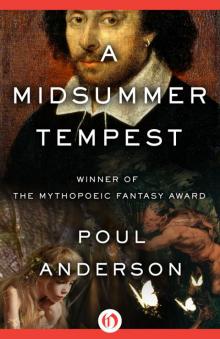 A Midsummer Tempest
A Midsummer Tempest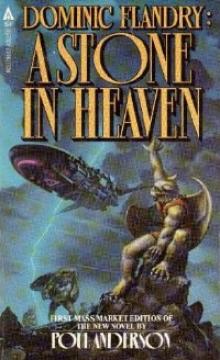 A Stone in Heaven
A Stone in Heaven Orbit Unlimited
Orbit Unlimited The Corkscrew of Space
The Corkscrew of Space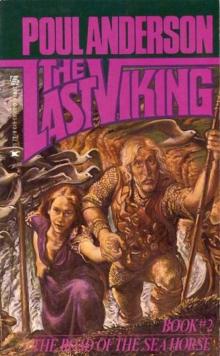 TLV - 02 - The Road of the Sea Horse
TLV - 02 - The Road of the Sea Horse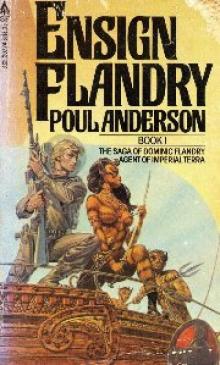 Ensign Flandry df-1
Ensign Flandry df-1 Young Flandry
Young Flandry The Broken Sword
The Broken Sword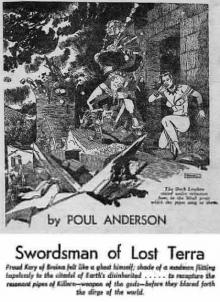 Swordsman of Lost Terra
Swordsman of Lost Terra Orion Shall Rise
Orion Shall Rise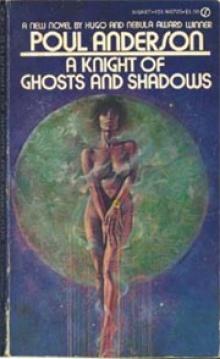 A Knight of Ghosts and Shadows df-7
A Knight of Ghosts and Shadows df-7 The Queen of Air and Darkness
The Queen of Air and Darkness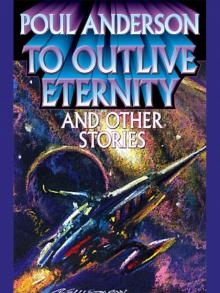 To Outlive Eternity
To Outlive Eternity The Golden Slave
The Golden Slave Dahut
Dahut Captain Flandry: Defender of the Terran Empire
Captain Flandry: Defender of the Terran Empire Un-Man and Other Novellas
Un-Man and Other Novellas David Falkayn: Star Trader (Technic Civlization)
David Falkayn: Star Trader (Technic Civlization)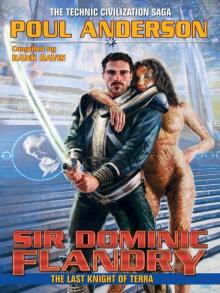 Sir Dominic Flandry: The Last Knight of Terra
Sir Dominic Flandry: The Last Knight of Terra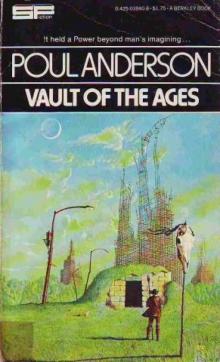 Vault of the Ages
Vault of the Ages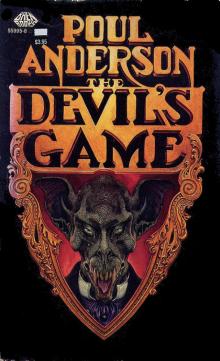 The Devil's Game
The Devil's Game A Stone in Heaven df-12
A Stone in Heaven df-12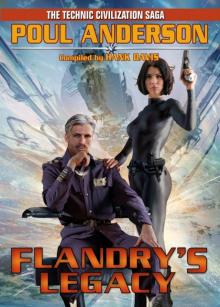 Flandry's Legacy: The Technic Civilization Saga
Flandry's Legacy: The Technic Civilization Saga Harvest the Fire
Harvest the Fire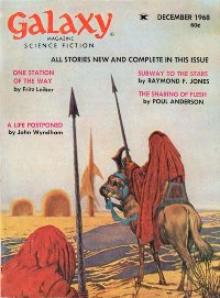 The Sharing of Flesh
The Sharing of Flesh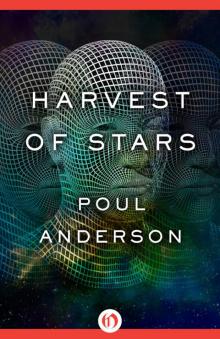 Harvest of Stars
Harvest of Stars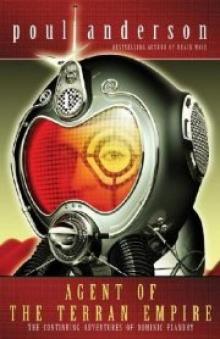 Agent of the Terran Empire
Agent of the Terran Empire World without Stars
World without Stars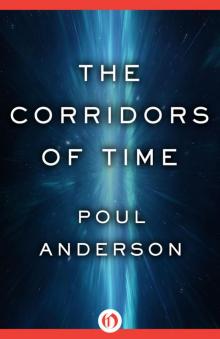 The Corridors of Time
The Corridors of Time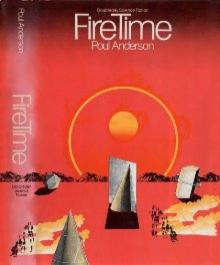 Fire Time gh-2
Fire Time gh-2![The Stars are also Fire - [Harvest the Stars 02] Read online](http://i1.bookreadfree.com/i1/04/01/the_stars_are_also_fire_-_harvest_the_stars_02_preview.jpg) The Stars are also Fire - [Harvest the Stars 02]
The Stars are also Fire - [Harvest the Stars 02] We Have Fed Our Sea
We Have Fed Our Sea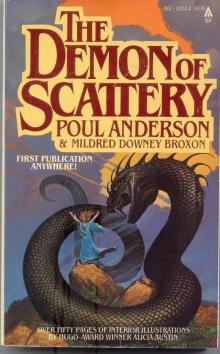 Demon of Scattery
Demon of Scattery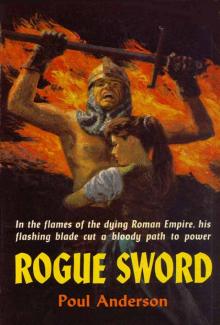 Rogue Sword
Rogue Sword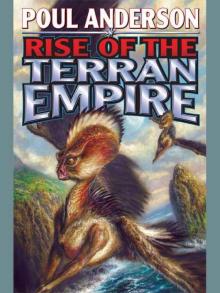 Rise of the Terran Empire
Rise of the Terran Empire The Only Game in Town tp-4
The Only Game in Town tp-4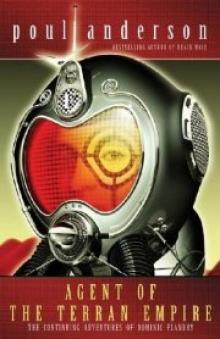 Agent of the Terran Empire df-5
Agent of the Terran Empire df-5 The Day Of Their Return
The Day Of Their Return Brain Wave
Brain Wave The Day of Their Return df-4
The Day of Their Return df-4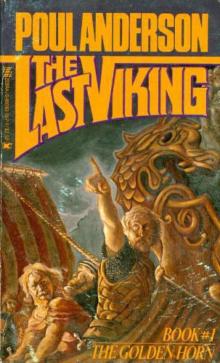 The Golden Horn
The Golden Horn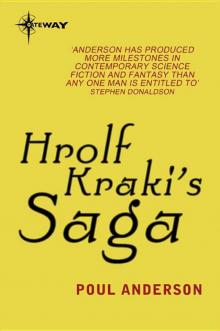 Hrolf Kraki's Saga
Hrolf Kraki's Saga Tau Zero
Tau Zero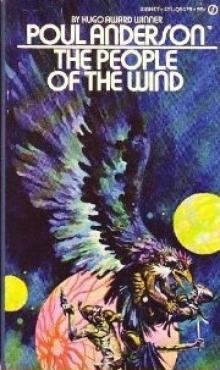 The People of the Wind
The People of the Wind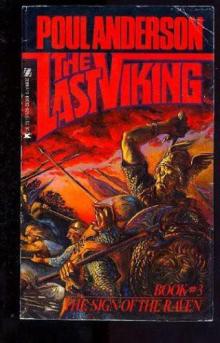 TLV - 03 - The Sign of the Raven
TLV - 03 - The Sign of the Raven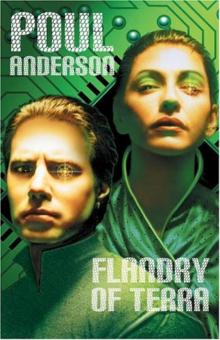 Flandry of Terra df-6
Flandry of Terra df-6 Gibraltar Falls tp-3
Gibraltar Falls tp-3 The Game Of Empire
The Game Of Empire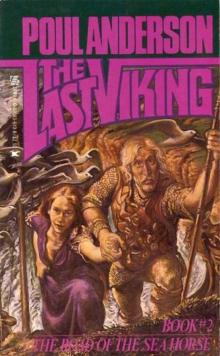 The Road of the Sea Horse
The Road of the Sea Horse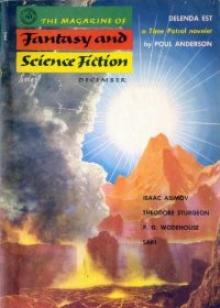 Delenda Est tp-5
Delenda Est tp-5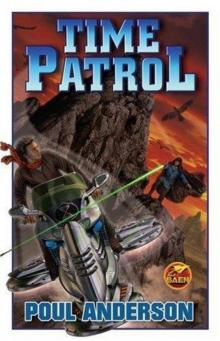 Time Patrol
Time Patrol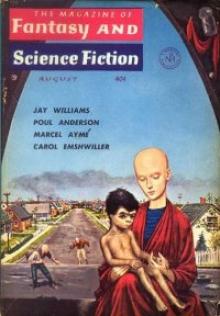 Brave To Be a King tp-2
Brave To Be a King tp-2 The Man Who Counts nvr-1
The Man Who Counts nvr-1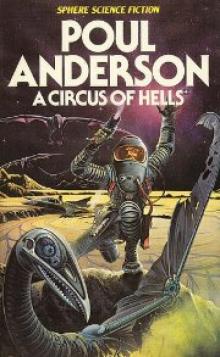 A Circus of Hells df-2
A Circus of Hells df-2 The Rebel Worlds df-3
The Rebel Worlds df-3 The Unicorn Trade
The Unicorn Trade Lord of a Thousand Suns
Lord of a Thousand Suns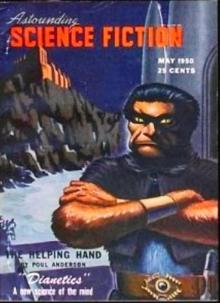 The Helping Hand
The Helping Hand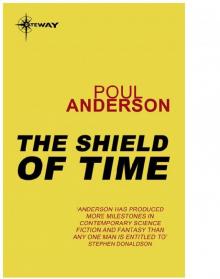 The Shield of Time
The Shield of Time The Van Rijn Method
The Van Rijn Method A Circus of Hells
A Circus of Hells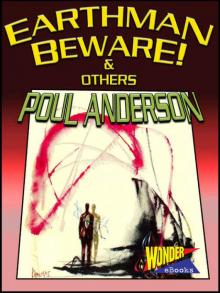 Earthman, Beware! and others
Earthman, Beware! and others Ivory, and Apes, and Peacocks tp-6
Ivory, and Apes, and Peacocks tp-6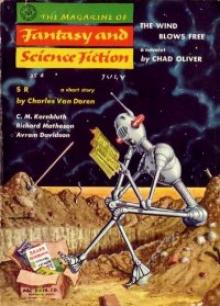 Life Cycle
Life Cycle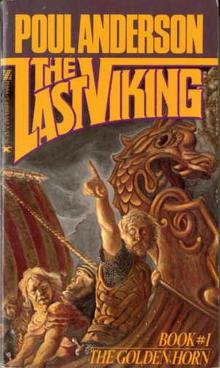 The Last Viking
The Last Viking Roma Mater
Roma Mater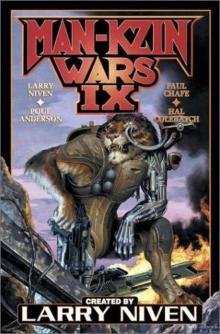 The Man-Kzin Wars 09 mw-9
The Man-Kzin Wars 09 mw-9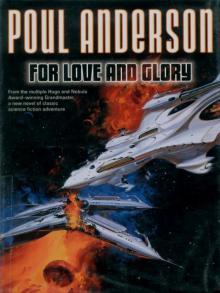 For Love and Glory
For Love and Glory Eutopia
Eutopia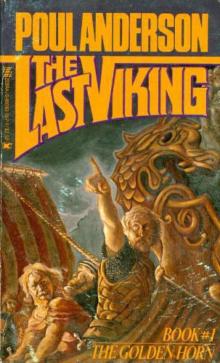 TLV - 01 - The Golden Horn
TLV - 01 - The Golden Horn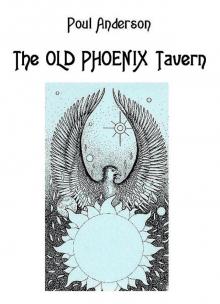 The Old Phoenix Tavern
The Old Phoenix Tavern The Long Night df-10
The Long Night df-10 The Dog and the Wolf
The Dog and the Wolf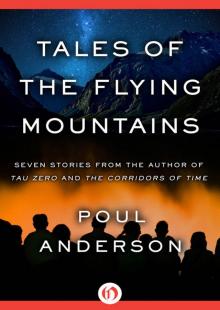 Tales of the Flying Mountains
Tales of the Flying Mountains There Will Be Time
There Will Be Time A Knight of Ghosts and Shadows
A Knight of Ghosts and Shadows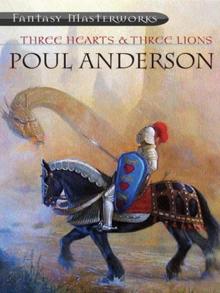 Three Hearts and Three Lions
Three Hearts and Three Lions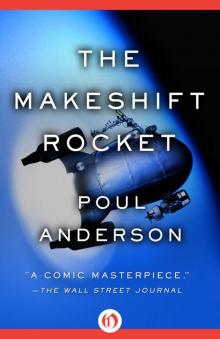 The Makeshift Rocket
The Makeshift Rocket The Dancer from Atlantis
The Dancer from Atlantis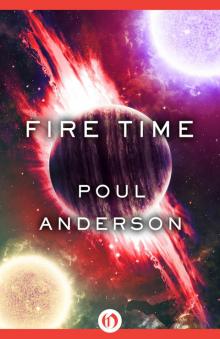 Fire Time
Fire Time